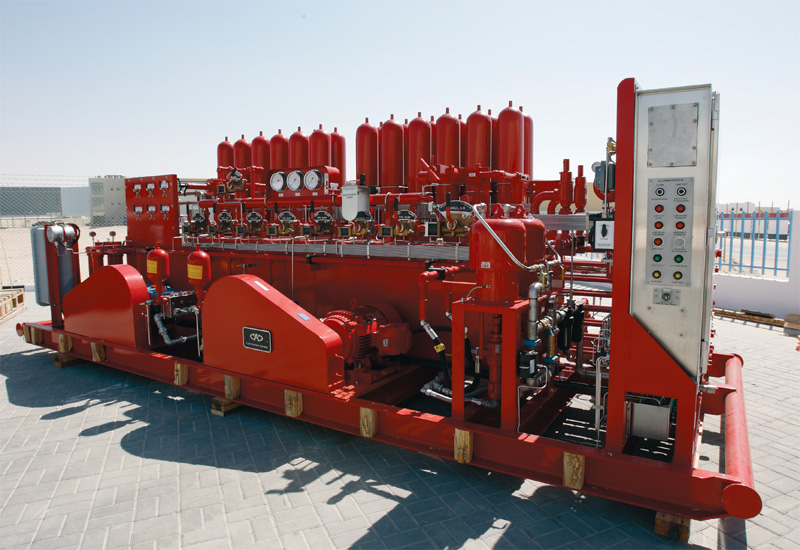Following the events in the Gulf of Mexico, the world’s attention has fallen on the equipment used to prevent such tragedies from happening again.
The year 2010 is most probably the year, much of the oil and gas industry would rather forget or at the very least, bury in the deepest recesses of its collective memory.
With the US government currently in pursuit of making its various lawsuits relating to the Deepwater Horizon disaster of last April, stick against a whole host of operators headed by BP, the business of preventing an oil well explosion or blowout and oil spill prevention is bound to be in the industry spotlight for the foreseeable future.
A blowout as defined in Schlumberger’s Oilfield Glossary is “An uncontrolled flow of reservoir fluids into the wellbore, and sometimes catastrophically to the surface. A blowout may consist of salt water, oil, gas or a mixture of these. Blowouts occur in all types of exploration and production operations, not just during drilling operations.”
Oil & Gas Middle East speaks to a few experts at the sharp end of this very important part of the industry to find out the current state of affairs in blowout prevention (BOP).
Mark Brupbbacher, a Dubai based service engineer for CAD Control Systems, a specialist in the design and assembly of blowout preventer control systems says that the Gulf of Mexico disaster was a wake-up call for the entire industry to get into shape.
“It has made it so much better, there are so many small operators and contractors that try to slide by, save a dollar, save a penny, and now since the Transocean Horizon everybody is getting more stringent on the safety aspect of it and they will not cut corners.
“As far as the safety aspect goes, it was a bad thing that happened to Transocean and BP but it was a good thing for the industry because now all these companies that were cutting corners aren’t going to be able to be cut corners, they either upgrade or they don’t get the contract,” he says.
The Louisiana, USA based company has been serving the Middle East through its strategic partnership with oil and gas equipment stockist, Woodhouse International in Dubai’s Jebel Ali free zone.
Brupbacher, a Louisiana native is proud of the company’s profile and longstanding quality in the industry.
“Obviously in an industry where corners were cut, our main emphasis is getting the people that work on the rigs back to their families safely and that’s a big priority for me,” says the family man.
Wei ChunPeng is deputy general manager of Shanghai Shenkai Petroleum Equipment (Shenkai), a Chinese BOP control systems manufacturer, believes that there is no need to reinvent the wheel in terms of best practices and that it is a matter of maintaining the quality of the BOP solution.
“All manufacturers of BOP must have the highest quality manufacturing practices,” he explains admitting that Shenkai is a new entrant to the Middle East market.
The company, which was previously government-owned, has traditionally followed Chinese oil and gas major Sinopec in its various projects in and around the region for the majority of its work, it has also served the likes of KOC, OGPC, ONGC, TFI of the US. As part of a five-year plan, Shenkai is due to be setting up an office in the UAE.
“Our prices are low yet the quality is high and all of the material used is based on the 4130 API standard,” claims ChunPeng trying to allay fears of quality issues associated with Chinese products.
Eager to corner the BOP market in the region, ChunPeng says: “Some people tell us that it is very hard to accept payment terms in the Middle East. We will accept any payment terms, 30% for down payment and 70% in balance which you can pay in monthly installments.”
Safety
Ensuring a safe working environment on oil platforms is something CAD’s Brupbacher is passionate about, he observes that maintenance of equipment namely BOP control systems is his personal bugbear.
“The biggest issue is keeping the fluid clean,” she says, “trash and debris is what tears down the unit and if you don’t have a good electrician or mechanic on the rig, sorry I don’t care how you build it, if the maintenance is not done, it’s not going to last,” he explains.
“You can get out on a rig and tell a crew that actually ‘I know what this equipment does and this is going to keep me from jumping into the water and send me home to my wife’, and then you get on some other ones and it’s covered in grease and you can tell that they don’t know the last time that it was tested and you start worrying.”
The ‘BOPstopper’
Texas based Subsea Oil Technologies was established for the purpose of designing, testing and producing efficient, high quality and fully operational, safety and emergency equipment for the undersea oil and gas industries.
Subsea has devised the “BOPstopper”, which is designed to contain a defective blowout preventer (BOP) in case of a deep water oil drilling accident similar to the 2010 BP/Deepwater Horizon oil spill.
Scott Wolinsky, inventor and patent applicant told Oil & gas Middle East, “Instead of tapping off various points of the defective BOP stack, the BOPstopper uses its various features to substantially isolate the BOP stack from the ocean by completely circumventing and encasing the defective BOP stack.
Thus, the amount of ocean water that mixes with the spewing oil and/or gas is minimised. Furthermore, a combination of one or more heating elements and measurement equipment, as well as the addition of one or more valves, allows the BOPstopper to better contain and/or control the spewing oil and/or gas. Subsea is confident that we have valuable, practical solutions for increasing the safety and reliability of deepwater oil well drilling operations,” he says.




